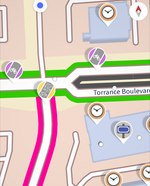The Time Machine
H.G. Wells
★★★★☆
I remember watching the 1960 movie of The Time Machine many times on TV when I was growing up. But somehow I never quite got around to reading the book until now.
It’s a bit dry by modern standards, but the framing sequence does draw you in, and of course once he starts telling the story of his trip 800,000 years into the future, there’s a wealth of speculation. The narrator self-conciously admits that he’s drawing inferences on what’s going on beyond what he sees, that the short week he had in that time isn’t enough for him to be sure he really understands.
There’s a bit of adventure, a bit of travelogue, a side trip to the last days of Earth before the expanding red giant sun swallows it up. But time travel isn’t really the point. It’s just the mechanism to comment on 19th century western society.
Eat the Rich
The division between labor and capital, or working class and aristocracy, has become full-on speciation. Humanity has split into the beautiful, childlike, idle Eloi and the monstrous, brutal Morlocks who maintain the vast underground machines that provide the Eloi everything they need.
Ironically, the socialist Wells sets up his protagonist and his audience to have more in common with the Eloi than the Morlocks. The time traveler is upper class, has servants, and has the money and time to spend years tinkering with inventions. His friends gather for formal dinner parties, though they’re mostly professionals rather than idlers. He pities the Eloi for their complete uselessness, identifies with them as they look more like today’s humans, and of course has nothing to fear from them. The Morlocks look more monstrous to him, and you get the impression that even if they weren’t attacking the Eloi at night and stealing the time machine, he’d still be horrified rather than pity their fate.
(Interesting side note: the description of the Morlocks in the book is awfully similar to the way Weta Digital designed Gollum. And yet Bilbo and Frodo both found it in their hearts to pity him.)
It’s a cautionary tale of what happens when you treat whole classes as subhuman, and still insist that they do all the work for you.
Science!
With old science fiction it’s always interesting to look at how it stacks up to today’s scientific knowledge. And The Time Machine holds up pretty well.
Biologically there’s an engineered world gone feral, and the evolution of the Eloi and Morlocks is very much in line with the selection pressures (or in the case of the Eloi, the lack of selection pressure) that they’ve lived under. The Eloi are neotenous, never emotionally developing much past childhood, much like housecats when compared to their wild cousins. And it’s not treated as an endpoint but simply a later stage – one which spirals down to extinction because ultimately, neither the Eloi nor the Morlocks are resilient enough to survive in the long run. In the distant future, the time traveler sees a post-human world in which insects and other wildlife return, the garden landscape returned to the wild.
It was written only a few decades after On The Origin of Species, and Darwin’s theory of evolution has just kept collecting more and more evidence since then, with a lot more incremental refinements than major changes.
Astronomically, the time traveller remarks on the constellations being completely changed, but the Milky Way still being the same. Motion of stars has been known for a long time, but we didn’t know what galaxies actually are – or that there are so many more of them than just our own – until several decades later. But the sun’s path within the galaxy is going to keep it within the same band and around the same general distance from the center. The hazy view along a disc of distant stars is still going to be a hazy view along a disc of distant stars. It’s not going to look exactly like it does today, but it’ll be in roughly the same part of the sky and look similar enough to be familiar. And in the far, far distant future, it certainly seems possible that Earth could become tidally locked with the sun (which would definitely alter weather, wind and waves considerably!), and we do know the sun is the type of star that will become a red giant. The only thing that seems off in that scene is that there’s still (barely) enough oxygen for him to breathe, and that one of the inner planets has moved outward toward Earth instead of just being swallowed up by the sun as it expands.
Geology is a bit sketchier. He stays in the location of London, and can still recognize the landscape even with all the buildings gone, but it seems like there ought to be more of a difference after almost a million years. Even without considering plate tectonics (not yet discovered) and continental drift, just ordinary erosion ought to have changed something in a river valley. That said, it’s a good thematic choice that strengthens the link between the future world and the then-modern society being critiqued.
